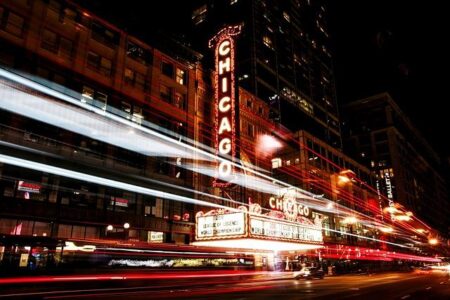Revised Pentagon Protocols for Marines Managing Civil Unrest in Los Angeles
The U.S. Department of Defense has unveiled a extensive framework to guide the conduct of Marines deployed during protests in Los Angeles. This initiative responds to escalating concerns about military roles in domestic disturbances, aiming to establish transparent and responsible engagement standards. The protocols emphasize a cautious, rights-respecting approach that balances public safety with the protection of demonstrators’ constitutional freedoms in America’s second-largest metropolis.
Highlighted components of the new directives include:
- Limiting lethal force strictly to scenarios where there is an immediate threat to human life.
- Mandatory incident documentation and thorough after-action reviews for all force applications.
- Strengthened collaboration with local law enforcement agencies to ensure unified operational efforts.
- Enhanced training programs focusing on crowd control, conflict de-escalation, and civil rights awareness.
| Directive | Summary |
|---|---|
| Force Application | Authorized only when necessary to prevent serious injury or death. |
| Engagement Authorization | Requires explicit command approval prior to any military intervention. |
| Interagency Coordination | Mandates close cooperation with LAPD and municipal authorities. |
| Training Focus | Continuous readiness in nonviolent tactics and civil liberties respect. |
Comprehensive Breakdown of Force Usage Guidelines for Military Personnel
The newly established rules provide a detailed hierarchy for the use of force by Marines during protest situations, prioritizing restraint and progressive escalation. Developed in light of recent unrest in Los Angeles, these protocols require personnel to begin with verbal engagement, escalating only when necessary to non-lethal methods, and reserving deadly force exclusively for life-threatening emergencies. Commanders must evaluate each incident carefully, maintaining open communication with civilian law enforcement to ensure coordinated responses.
The authorized levels of force include:
- Verbal Instructions: The initial step to encourage peaceful compliance.
- Physical Control: Use of handcuffs or holds limited to situations requiring restraint without violence.
- Non-lethal Tools: Deployment of items such as batons, tear gas, and rubber bullets under strict supervision.
- Deadly Force: Reserved solely for scenarios where there is an imminent risk to life.
| Force Level | Action Permitted | Condition for Use |
|---|---|---|
| Level 1 | Verbal Warning | Initial interaction with crowd |
| Level 2 | Physical Restraint | Non-compliance or minor aggressive behavior |
| Level 3 | Non-lethal Force | Escalation in violence or property damage |
| Level 4 | Deadly Force | Immediate threat to life |
Harmonizing Security and Civil Liberties in Military Responses to Protests
In the context of ongoing demonstrations in Los Angeles, military strategists face the delicate challenge of crafting policies that uphold public order without infringing on fundamental rights. The updated guidelines stress stringent restrictions on force application, mandating that Marines prioritize de-escalation and exercise restraint. Command leadership is instructed to respect protesters’ constitutional protections, including freedom of speech and peaceful assembly, while effectively addressing any credible threats. This balanced framework reflects lessons learned from previous incidents where military involvement in civil matters sparked controversy.
Operational protocols include:
- Defined engagement thresholds: Clear criteria for when force might potentially be employed.
- Accountability frameworks: Comprehensive documentation and review of all force-related actions.
- Interagency collaboration: Ensuring military efforts support, rather than supplant, local law enforcement.
- Specialized training: Preparing personnel in crowd management techniques that honor human rights.
| Focus Area | Goal |
|---|---|
| Force Application | Reduce harm and limit intervention to what is strictly necessary |
| Civil Rights | Safeguard constitutional freedoms during operations |
| Agency Coordination | Facilitate seamless cooperation with local authorities |
| Transparency | Promote oversight and build public confidence |
Enhancing Training and Accountability for Military Crowd Management
The Pentagon underscores the importance of rigorous training initiatives centered on de-escalation,lawful force application,and cultural competence to prepare Marines for domestic crowd control.Regular drills simulate realistic protest scenarios, fostering rapid yet prudent decision-making under pressure. Emphasis is placed on non-lethal strategies that prioritize minimizing harm while maintaining public order.
Robust accountability systems complement these training efforts, with strict protocols for documenting every use-of-force event and independent oversight mechanisms to investigate potential misconduct. These measures aim to enhance transparency, reinforce ethical conduct, and uphold democratic principles during military deployments on U.S. soil.
Concluding Thoughts on Military Engagement in Domestic Protests
As the Pentagon rolls out these updated use-of-force guidelines for Marines operating amid protests in Los Angeles, the nation watches closely. The challenge remains to strike an effective balance between ensuring public safety and respecting individual rights. These protocols highlight the complexities inherent in deploying military forces in civilian contexts and will likely influence how future demonstrations are managed across the country. Observers and civil rights advocates alike will be monitoring the implementation and outcomes of these policies in the months ahead.




